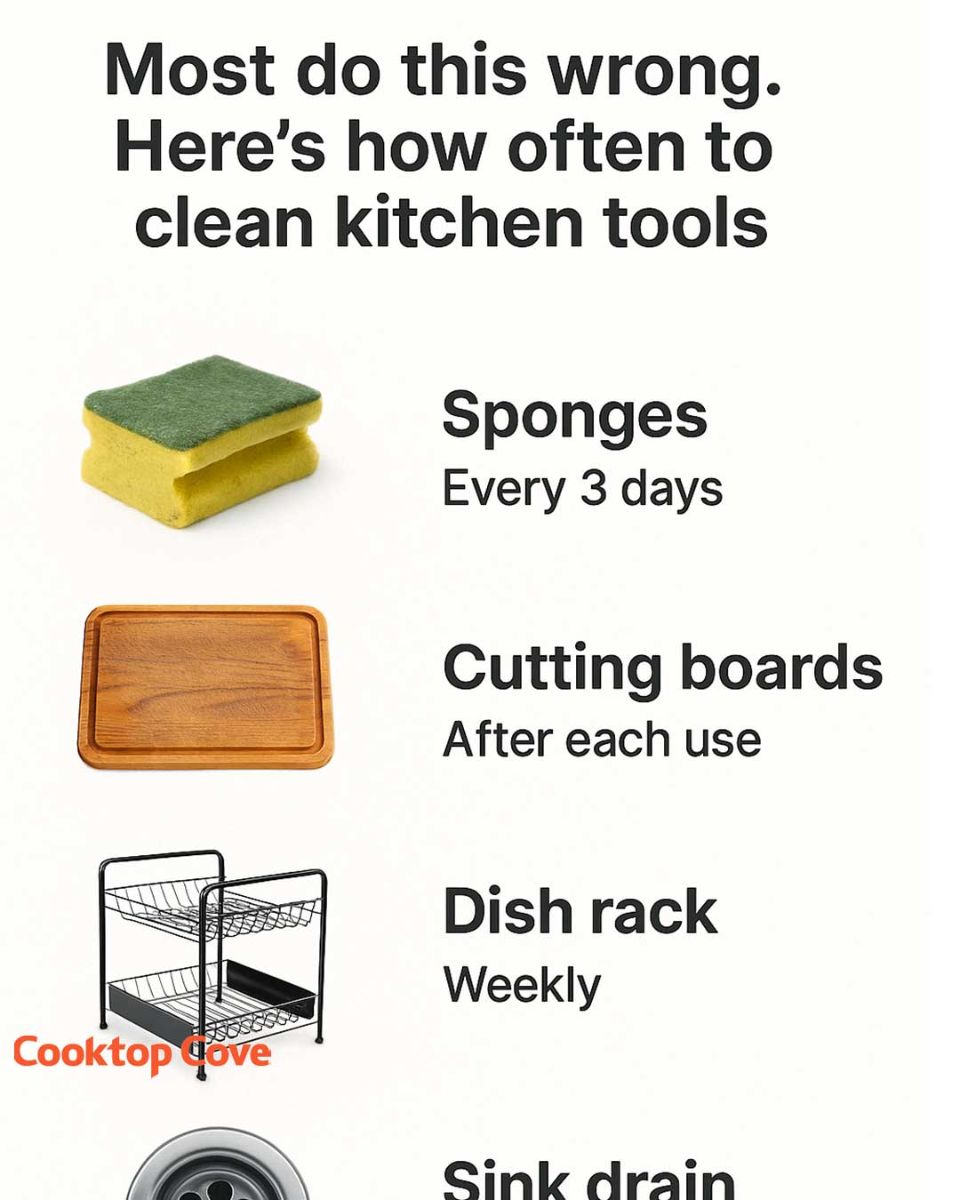Print this recipe
In the hustle and bustle of daily life, it’s easy to overlook the cleanliness of our kitchen tools. However, maintaining a clean kitchen is essential not only for aesthetic purposes but also for health and safety. Many people underestimate the frequency with which these tools should be cleaned, leading to potential hygiene issues.
Understanding the correct cleaning schedule for each kitchen tool can prevent the spread of bacteria and ensure that your kitchen remains a safe environment for food preparation. This article will guide you through the recommended cleaning frequencies for various kitchen tools, helping you keep your kitchen in top condition.
1. The Importance of Clean Kitchen Tools
Kitchen tools come into direct contact with food, making them potential carriers of bacteria and germs if not cleaned properly. Contaminated tools can lead to foodborne illnesses, which affect millions of people each year. According to the Centers for Disease Control and Prevention (CDC), approximately 48 million people get sick from foodborne diseases annually in the United States alone.
Proper cleaning of kitchen tools not only prevents the spread of harmful bacteria but also extends the lifespan of the tools. Residue and grime can cause wear and tear, leading to the need for more frequent replacements. By adhering to a regular cleaning schedule, you can ensure that your kitchen tools remain in good condition and safe for use.
2. Sponges: Clean Every 3 Days
Sponges are notorious for harboring bacteria due to their porous nature and frequent exposure to food particles and moisture. A study published in Scientific Reports found that kitchen sponges can contain up to 362 different species of bacteria. To mitigate this, it’s recommended to clean your sponge every 3 days. You can do this by microwaving a damp sponge for 1-2 minutes or soaking it in a solution of 1 part bleach to 9 parts water for 5 minutes.
Additionally, replacing your sponge every 2 weeks is advisable to ensure optimal hygiene. Using a sponge holder that allows for proper drainage and air circulation can also help reduce bacterial growth.
3. Cutting Boards: Clean After Each Use
Read more on next page
ADVERTISEMENT

